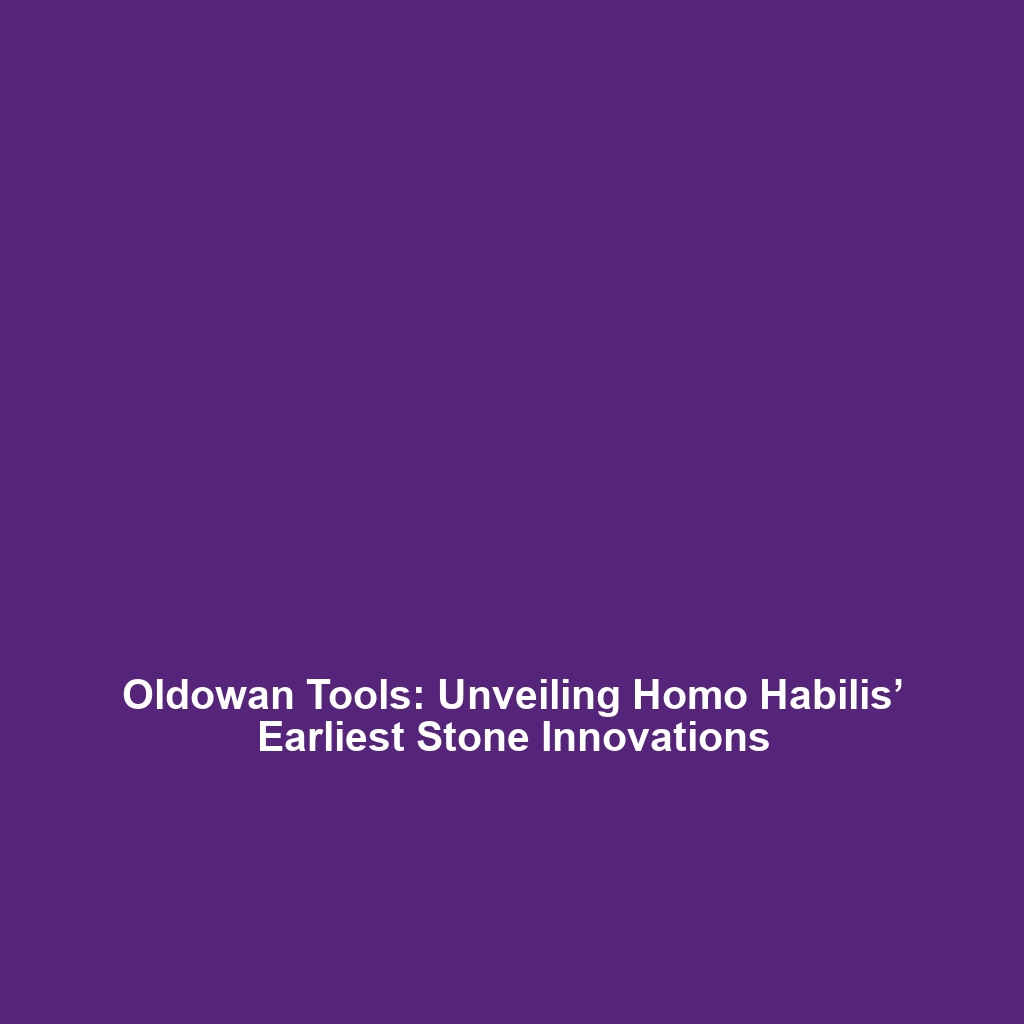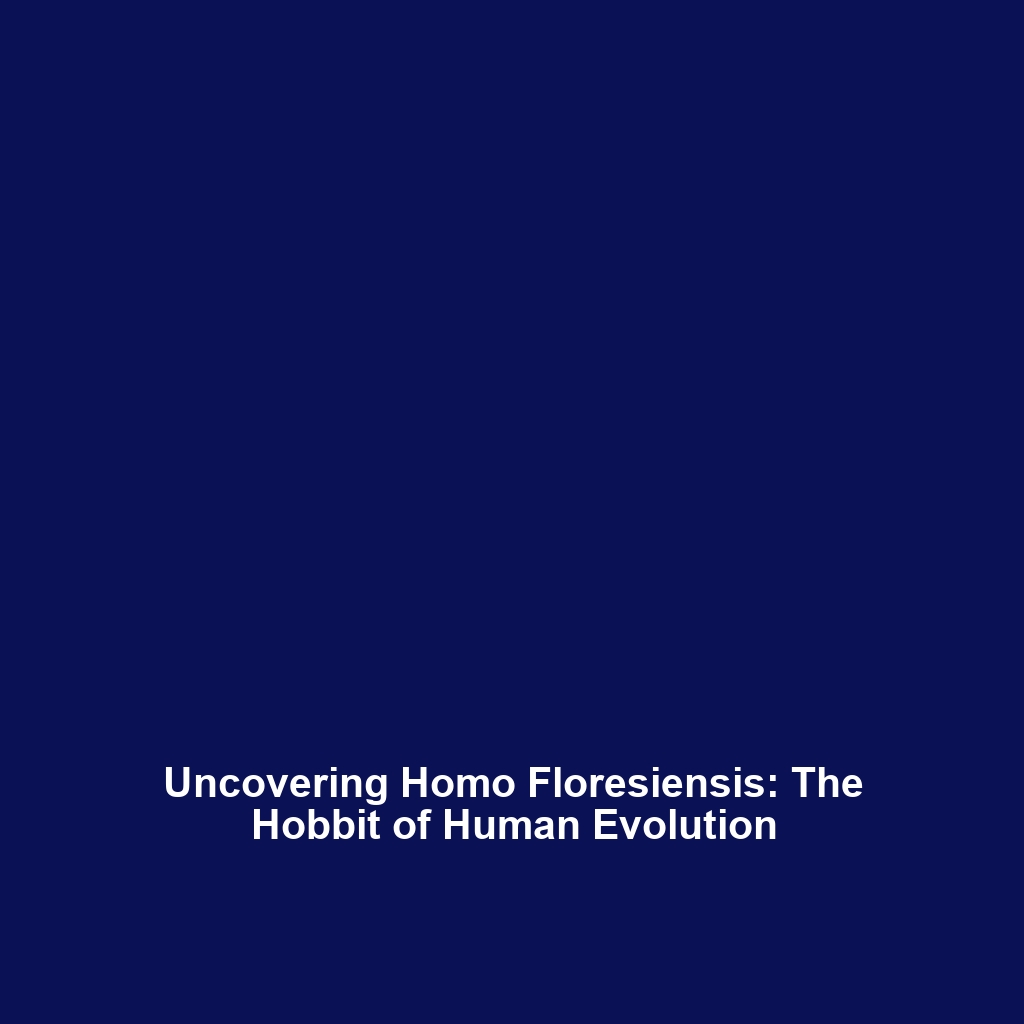Oldowan Tools: The Earliest Known Stone Tools and Their Significance in Human Evolution
Introduction
Oldowan Tools are recognized as the earliest known stone tools used by our ancestors, primarily linked to Homo habilis. These rudimentary implements, characterized by simple flakes and cores, mark a pivotal milestone in the story of Human Evolution. Dating back approximately 2.6 million years, Oldowan technology provides crucial insights into early human behavior and cognitive development, showcasing the initial steps toward complex tool-making. Understanding the significance of these tools not only illuminates the evolutionary journey of Homo habilis but also serves as a foundation for the technological advancements that would follow.
Key Concepts
The study of Oldowan Tools encompasses several key concepts central to understanding their role in Human Evolution.
1. Definition and Characteristics
Oldowan Tools are primarily simple stone flakes created through a process of knapping, where pebbles or cores are struck to produce sharp edges for cutting and scraping. The main characteristics include:
- Basic shapes, primarily flakes and cores
- Used for processing food and possibly crafting materials
- Manufactured from readily available local stones
2. Evolutionary Implications
The creation and utilization of Oldowan Tools are indicative of the cognitive and physical evolution of Homo habilis. This period marks a transition from scavenging to a more active role in food procurement, reflecting increased problem-solving skills and a developing ability to manipulate the environment effectively.
Applications and Real-World Uses
The applications of Oldowan Tools in Human Evolution extend beyond their functional uses in prehistoric societies. They contribute to our understanding of the daily lives of early hominins.
Key applications include:
- Food Processing: Tools were primarily used for cutting meat and plant materials, playing a crucial role in dietary changes.
- Crafting: Enabled early humans to modify their environment, leading to advancements in tool production and use.
- Cultural Significance: Oldowan Tools offer insights into the social and cultural structures of early hominin groups.
Current Challenges
Despite their significance, studying Oldowan Tools presents several challenges:
- Preservation Issues: Many tools have not survived the test of time due to environmental factors.
- Site Access: Limited access to excavation sites hinders comprehensive study.
- Interpretation Variance: Different researchers may have varying interpretations of the same artifacts, leading to conflicting theories.
Future Research and Innovations
Looking ahead, research on Oldowan Tools continues to evolve. Innovations in technology are paving the way for more detailed analyses of these artifacts. Breakthroughs in imaging techniques and AI-based analyses promise to refine our understanding of early human tool use. Potential avenues for future research include:
- Advanced isotopic analysis to uncover dietary patterns
- The use of 3D modeling to recreate tool-making techniques
- Interdisciplinary studies combining archaeology, anthropology, and materials science
Conclusion
Oldowan Tools stand as a testament to the ingenuity of our early ancestors, directly influencing the course of Human Evolution. As humanity continues to explore its origins, these ancient tools provide a window into the past, highlighting the connections between tool use, survival, and cultural development. For further reading on early human innovations, explore our other articles on prehistoric tools and human ancestors.

